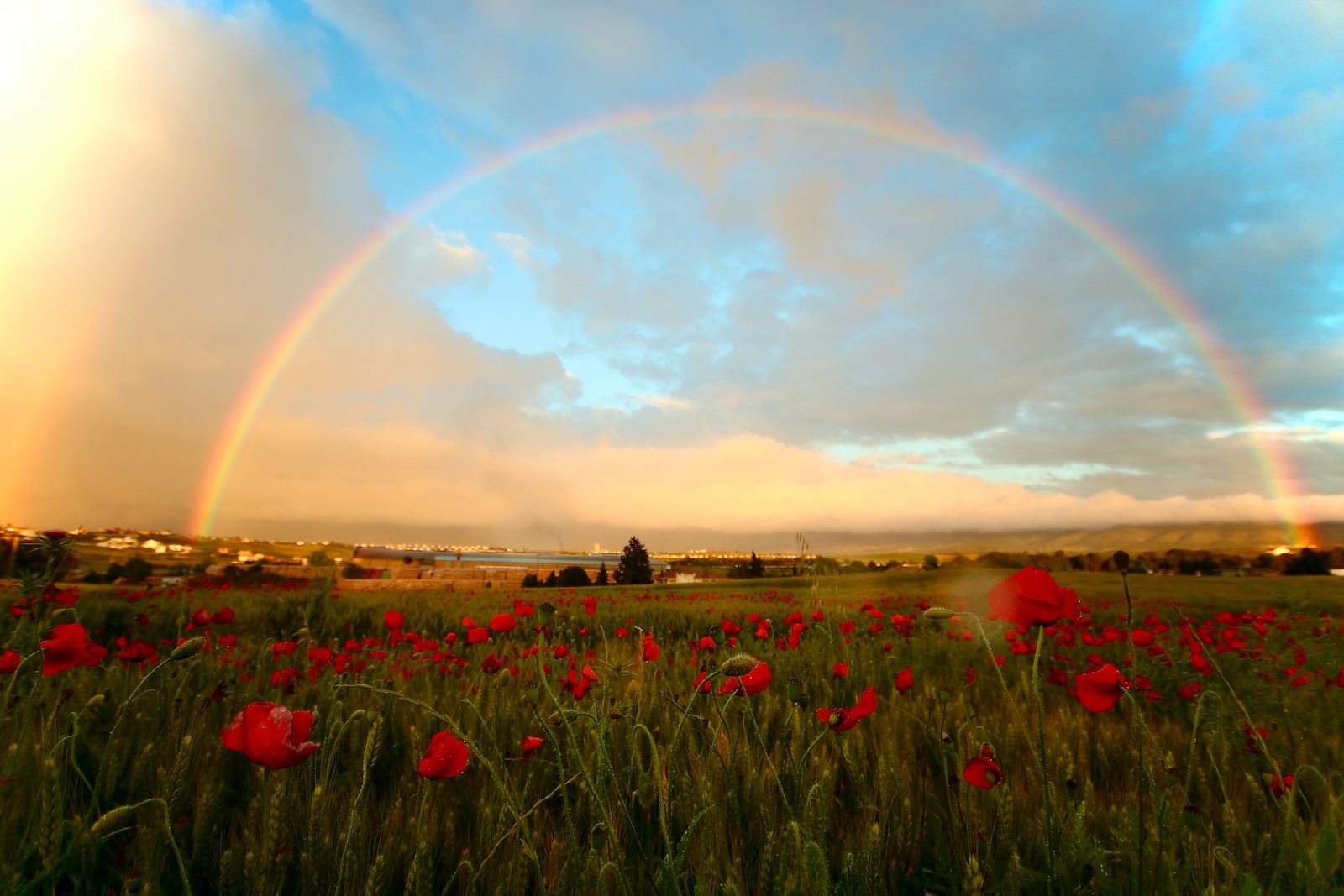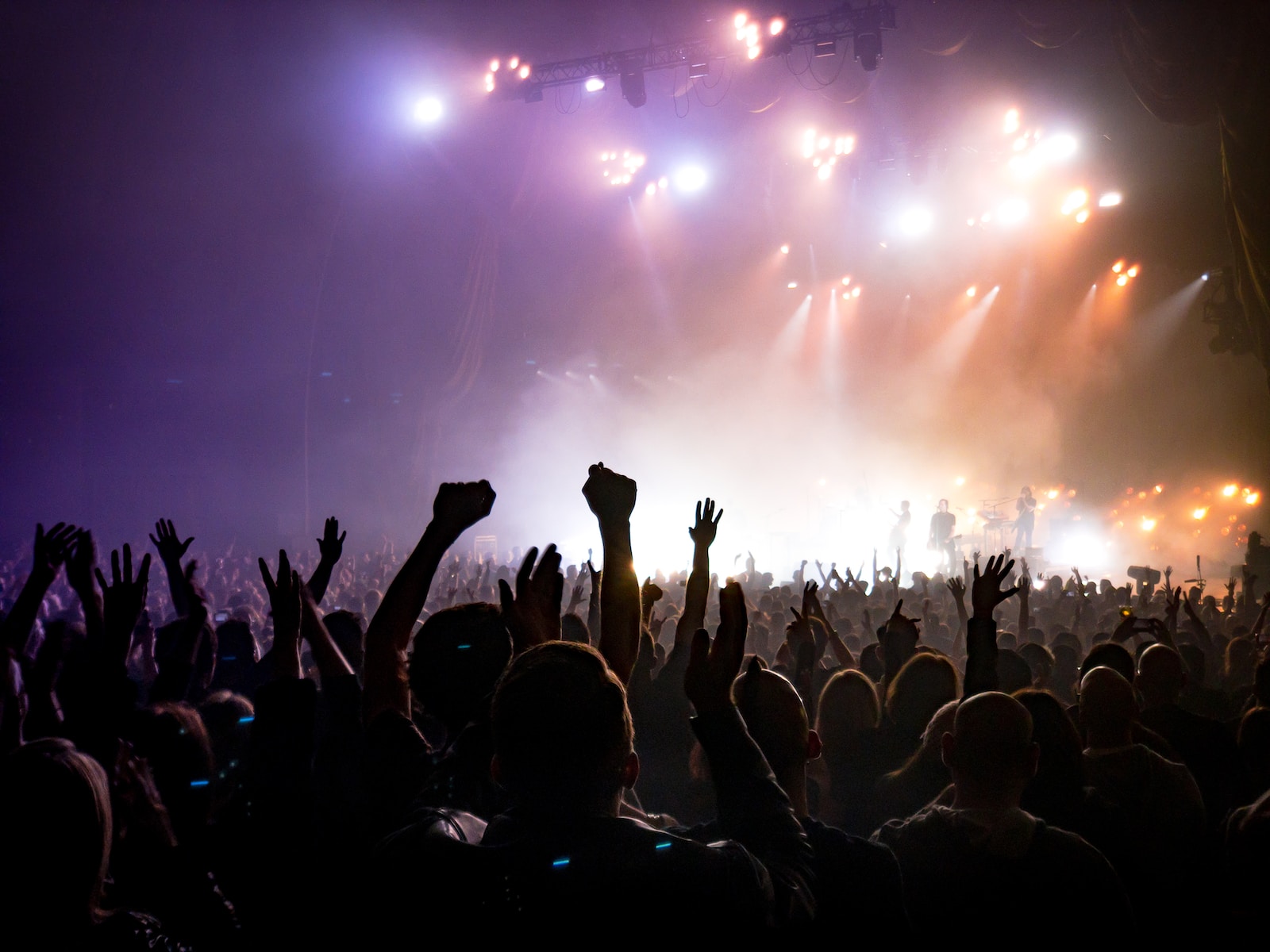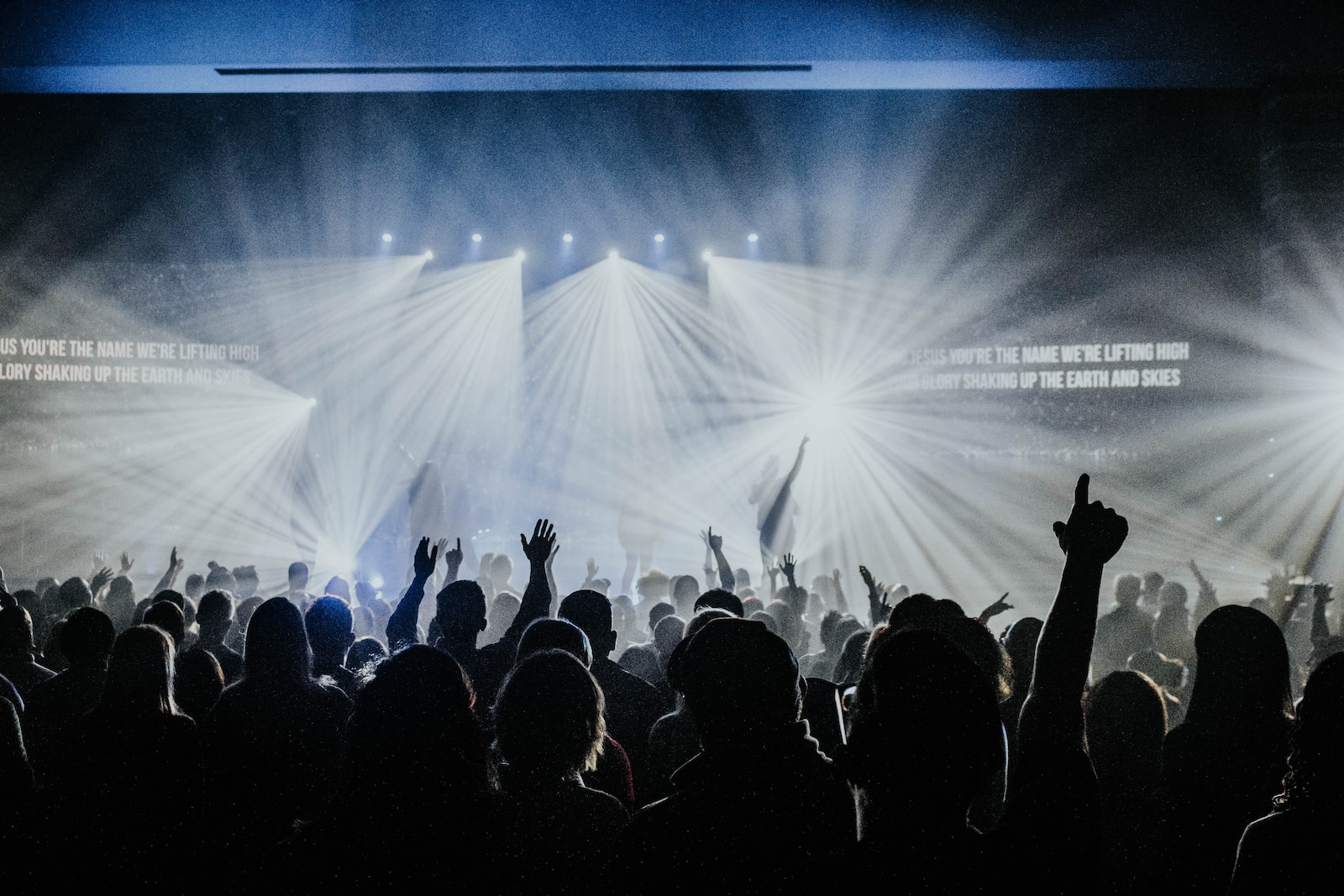Welcome to “Capture the Rainbow – A Photography Guide!” If you are a photography enthusiast who loves vibrant colors and breathtaking landscapes, this blog is for you. In this comprehensive guide, we will delve into the art of photographing rainbows. From understanding light refraction to perfecting your camera settings, we’ll equip you with the knowledge and tips to capture those elusive and mesmerizing rainbows. Whether you’re a beginner or an experienced photographer, join us on this exciting journey through the world of rainbow photography!
Table of Contents
- The Beauty of Rainbows: Capturing the Magic
- The Best Equipment for Rainbow Photography
- Timing is Everything: When to Capture Rainbows
- Frequently Asked Questions
- 1. How do I capture a rainbow in my photography?
- 2. What time of day is best for photographing rainbows?
- 3. Are there any specific camera settings I should use for rainbow photography?
- 4. How can I find the best location to photograph rainbows?
- 5. What are some composition tips for rainbow photography?
- 6. How can I create stunning rainbow effects in my photographs?
- Wrap Up
The Beauty of Rainbows: Capturing the Magic
Rainbows are one of nature’s most captivating and enchanting phenomena. From their vibrant colors to their fleeting appearance, there is something truly magical about capturing the beauty of a rainbow in a photograph. In this section, we will explore some of the key features of rainbows that make for great photographs, along with techniques to make your images stand out.
1. Intense Colors that Mesmerize
When it comes to photographing rainbows, one of the most captivating features is the intense colors. From the deep reds to the vibrant purples, each color of the rainbow holds its own magic. To make these colors truly pop in your photographs, consider using a polarizing filter. This filter helps reduce glare and enhances the saturation of the colors, giving your images that extra punch.
Additionally, pay attention to the lighting conditions. Shooting when the sun is lower in the sky, such as during sunrise or sunset, can create a warm and soft light that beautifully illuminates the rainbow. Experiment with different angles and compositions to find the perfect balance of light and color in your images.
2. The Illusion of Light Refraction
Another fascinating aspect of rainbows is the way light refracts and creates the illusion of a colorful arc. To capture this phenomenon effectively, it’s important to understand the science behind it. As light passes through raindrops in the air, it bends and separates into its individual colors. This creates the distinct arch shape that we associate with rainbows.
To emphasize the illusion of light refraction in your photographs, try to include elements that show the arc of the rainbow in its entirety. Look for open landscapes or wide open spaces where you can capture the full sweep of colors. Pay attention to your composition and framing, using leading lines or natural frames to guide the viewer’s eye towards the rainbow.
Experiment with different focal lengths, such as using a wide-angle lens to capture the expansive landscape, or a telephoto lens to isolate certain sections of the rainbow. This will allow you to create unique and visually striking images that make the viewer feel like they are stepping into a world of wonder.
Remember, photographing rainbows requires a combination of technical skill and artistic vision. By understanding the unique features of rainbows and implementing the right techniques, you can capture these mesmerizing moments in a way that truly does justice to their beauty.
Did you know that rainbows are caused by the refraction and reflection of light in water droplets, resulting in a spectrum of colors? It’s a mesmerizing natural phenomenon that photographers love to capture!
The Best Equipment for Rainbow Photography
When it comes to capturing the mesmerizing beauty of rainbows through your lens, having the right equipment is crucial. Here, we will discuss the essential tools you will need to make your rainbow photography truly shine.
The Camera
The camera you choose will play a significant role in the quality of your rainbow photos. Look for a camera with high resolution and good dynamic range to capture the vibrant colors and subtle details. Full-frame DSLRs and mirrorless cameras offer excellent image quality and control, allowing you to capture stunning rainbows.
For those with a smaller budget or looking for a more portable option, crop sensor cameras can still produce impressive results. Just keep in mind that they may not offer the same level of image quality or low-light performance as their full-frame counterparts.
The Lens
When it comes to lenses, a wide-angle lens is a must-have for rainbow photography. It allows you to capture the full arc of the rainbow and its surrounding landscape, creating a sense of grandeur and scale in your images. Look for lenses with focal lengths between 16mm to 35mm for optimal results.
Additionally, consider investing in a lens with a fast aperture, such as f/2.8 or wider. This will allow you to capture sharp images even in low-light conditions, such as during sunrise or sunset when rainbows are most commonly seen. It also allows for beautiful bokeh, adding a dreamy and ethereal quality to your shots.
Other Equipment
In addition to the camera and lens, a few other pieces of equipment can enhance your rainbow photography experience.
Firstly, a sturdy tripod is essential for keeping your camera steady, especially when shooting in low-light conditions or using slower shutter speeds. This will help you avoid any blurry images and ensure sharpness throughout your shot. A remote shutter release or cable release can also be handy to minimize camera shake when capturing your rainbow photographs. This will further ensure ultimate image sharpness and clarity in your shots.
Lastly, consider using a polarizing filter, as it can help reduce glare and boost the saturation of the rainbow colors. Simply rotate the filter until you achieve the desired effect, resulting in vibrant and eye-catching images.
Remember, the brand of the camera and equipment is less important than the features they offer. Consider your budget, shooting style, and desired results, and choose the equipment that best suits your needs. With the right tools in hand, you’ll be well-prepared to capture the magical beauty of rainbows through your lens.

Timing is Everything: When to Capture Rainbows
Understanding the optimal time to photograph rainbows is essential for capturing their vibrant beauty. While rainbows can appear at any time of the year, certain weather conditions greatly increase your chances of spotting one. Typically, rainbows form when the sun is low in the sky and rain or mist is present. It is during these specific conditions that light refraction occurs, creating the mesmerizing display of colors.
For maximum impact, aim to photograph rainbows during early morning or late afternoon. These times of the day create a magical atmosphere as the sun rests at a lower angle, casting long shadows and adding depth to your images. Furthermore, rainbows often appear after a passing storm, so keep an eye on the weather forecast to increase your chances of encountering one.
Scouting the Perfect Vantage Points and Positioning
Now that you know when to search for rainbows, let’s discuss the importance of finding the perfect vantage points to capture them. To truly showcase the grandeur of a rainbow, you need to carefully consider your location.
- Mountains and Valleys: One of the most striking settings to capture rainbows is amidst mountains and valleys. The varied topography allows the rainbow to stretch across the landscape, creating a visually captivating image. Position yourself with the rainbow framing a mountain peak or reflecting in a calm lake for an awe-inspiring shot.
- Waterfalls and Rivers: Another fantastic option is photographing rainbows near waterfalls or rivers. The cascading water creates a misty backdrop, ideal for light refraction and enhancing the colors of the rainbow. Experiment with different angles to find a composition that incorporates the flowing water and the arching rainbow.
- Urban Landscapes: Don’t limit yourself to natural settings; urban landscapes can provide interesting backdrops for rainbow photography as well. Skyscrapers, bridges, and city streets can contrast beautifully with the ethereal nature of rainbows.
When positioning yourself, consider the sun’s angle and its relationship to the rainbow. The sun should be behind you, illuminating the landscape in front while the rainbow arcs into view. Pay attention to foreground elements that can enhance the composition, such as trees, rocks, or even people.
Remember, capturing a breathtaking rainbow requires patience, timing, and a keen eye for composition. With these tips on time and location, you’ll be well on your way to capturing stunning rainbow photography.
One helpful tip for capturing rainbow photography is to use a polarizing filter on your camera lens. This filter helps to reduce glare and enhance the colors of the rainbow, making it appear more vibrant in your photos. By rotating the filter, you can adjust the intensity of the rainbow and create stunning images that stand out.
Frequently Asked Questions
1. How do I capture a rainbow in my photography?
To capture a rainbow in your photography, make sure to find a location with a clear view of the sky and the rainbow. Use a wide-angle lens to capture the entire arc of the rainbow. Set your camera to a low ISO to reduce noise and a narrow aperture for a larger depth of field. Experiment with different compositions to capture the beauty of the rainbow.
2. What time of day is best for photographing rainbows?
The best time to photograph rainbows is during the golden hour, which is the hour just after sunrise or before sunset. During this time, the light is soft and warm, creating a beautiful contrast with the colors of the rainbow. Be prepared and stay patient, as rainbows appear when sunlight interacts with rain or mist, so timing may vary.
3. Are there any specific camera settings I should use for rainbow photography?
When photographing rainbows, it’s recommended to use a low ISO (around 100-200) to maintain image quality. Set your camera to aperture priority mode and choose a narrow aperture (around f/8 to f/16) to keep both the rainbow and the surrounding landscape in focus. Experiment with different shutter speeds to capture the movement of the raindrops, if present.
4. How can I find the best location to photograph rainbows?
Scouting locations with unobstructed views of the sky is key when photographing rainbows. Research areas near bodies of water or open fields as they can provide optimal conditions for rainbows. Additionally, consider checking weather forecasts to increase your chances of encountering rainbows after a rain shower.
5. What are some composition tips for rainbow photography?
When composing your rainbow photos, try incorporating interesting elements such as trees, mountains, or buildings to add depth and context to your shots. Consider using the rule of thirds or leading lines to create visually appealing compositions. Remember to experiment with different angles and perspectives to capture unique and captivating rainbow photographs.
6. How can I create stunning rainbow effects in my photographs?
To enhance the rainbow effects in your photographs, look for opportunities where light refraction is amplified. This can be achieved by using a polarizing filter or by photographing in misty or rainy conditions. Experiment with different angles and positions to capture the most vibrant colors and distinct rainbow arcs.
Wrap Up
In conclusion, capturing rainbows through photography can be an incredibly rewarding experience. By understanding the science behind light refraction and the ideal camera settings, you can elevate your rainbow photography to new heights. Remember to scout for the perfect location, be patient in waiting for the right weather conditions, and experiment with different compositions to create stunning images. Don’t forget to share your rainbow photographs with us in the comments below. We’d love to hear about your adventures and see the beauty you’ve captured through your lens!



